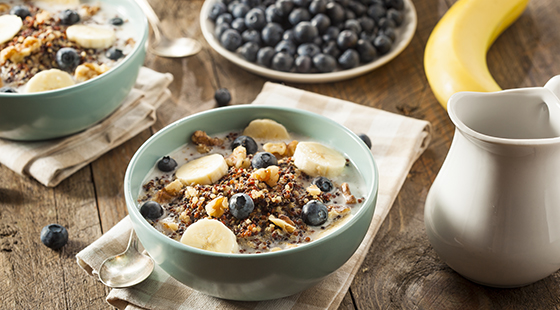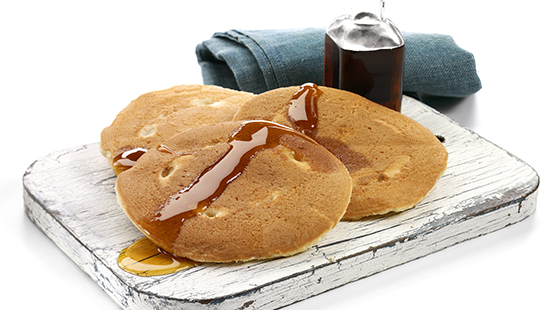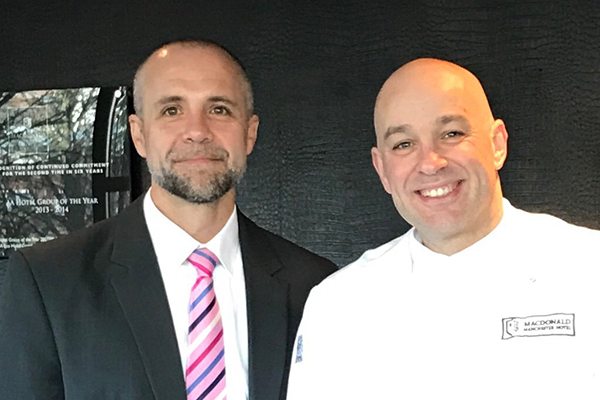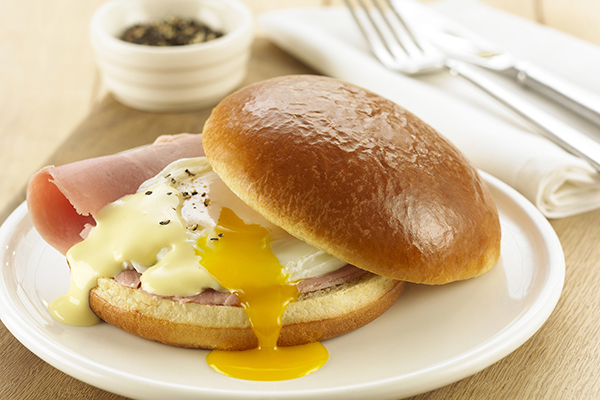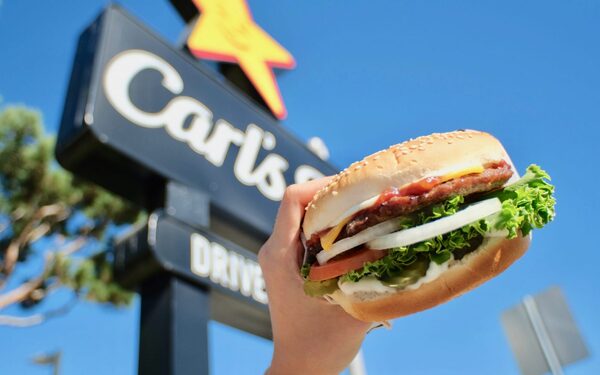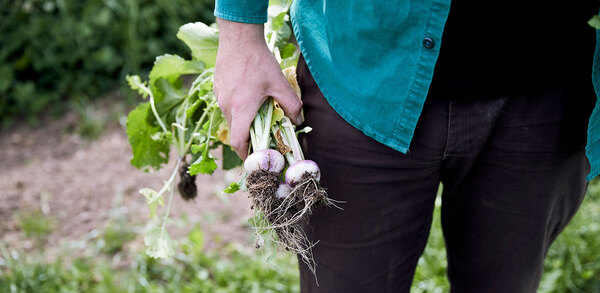Sharpen up your breakfast menu
With new research indicating that customers are breakfasting out less often, the next year could be a tough one for operators who aren't on top of their morning menus
Data has revealed that just 4% of consumers say they would eat breakfast out of the home daily now, compared with 15% in 2015. While the average spend on breakfast has increased by 31% to £10.09 as a result of inflation, a drastic drop in frequency has led to estimated daily spend going down from £76m in 2015 to £20m now, according to the figures from supplier Beacon.
So it is a good time to take stock. Are you targeting the right customers? Does your menu offer the right mix of reassurance and novelty? Are you catering for special diets? And are you targeting the growth areas of food to go and brunch?
Suppliers have plenty of advice on how to tackle the growing brunch and food to go trends, and menu ideas and tips on how to rise above the competition in what has become a crowded breakfast marketplace.
By offering unlimited drinks, such as non-alcoholic juice, consumers can receive a full package for a set price. And menus can include more indulgent dishes, such as waffles, pancakes, eggs and bacon, as well as healthier options.
With the extended brunch timings, it is important that caterers add dishes that arenât typically associated with breakfast, such as macaroni cheese,she adds.
Lucy Pedrick, insights manager at Bidfood, agrees that brunch is the social eating occasion of the moment. More pubs are capitalising on this by expanding their hot drinks offer throughout the day and offering special morning drinks, such as bellinis, buckâs fizzes, bloody marys and Prosecco.
Brunch dishes may also command higher menu prices. Brunch can be offered either alongside breakfast menus or as a separate offering with dishes that arenât necessarily restricted to a particular time of the day, says Lisa Lewis, Lantmännen Unibake UKâs marketing manager.
Fast feasting
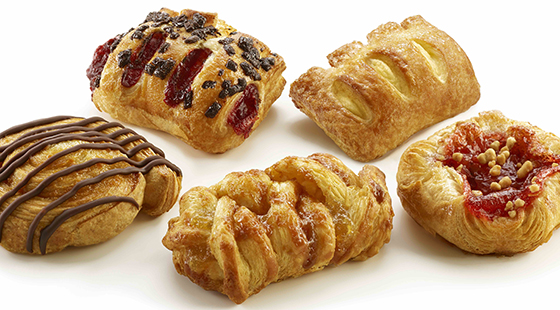
We are experiencing a âgrab and goâ food revolution, she says, with almost a third of consumers (30%) regularly eating breakfast on the go â" rising to 38% of 16- to 34-year-olds (Mintel, 2016).
Hot rolls and sandwiches are a popular choice, with 40% of people who eat out of home enjoying them. âWeâre also seeing innovative twists on the traditional bacon butty, with flavours such as maple bacon in a brioche bun, and the trend for South American tastes, such as Cajun or Mexican, is infiltrating the bacon and eggs combo.â
Supplier Brakes has identified a gap in the market for a âhealthierâ grab and go option in the morning says Mark Irish, head of food development. For example, it has launched a breakfast bun topped with pumpkin seeds with fewer than 250 calories.
Chris Beckley, managing director of foodservice supplier KFF, says itâs important to remember that the rising demand for breakfast products is largely due to hectic lifestyles, meaning the speed and efficiency of the product is key. Any products that are introduced should be easy to eat anywhere on the move.
Operators can also generate an additional sales opportunity by ensuring sandwiches are on display first thing, as many people will come in to grab breakfast and lunch at the same time, suggests Margaretha Schneeweis, category market leader for pastry mixes at CSM Bakery Solutions.
Rise and shine
Mark Irish of Brakes says porridge remains uber-trendy, spawning a plethora of options. Breakfast pots and granola remain two other big growth areas. Freshly cooked hot breakfast pots are on the rise with choices including smoked salmon and avocado alongside traditional ingredients such as bacon and eggs.
Ensuring that your breakfast menu has âadded valueâ with new twists on traditional favourites is key. Jacqui Passmore, UK and Ireland marketing manager at Dawn Foods, suggests a vegan cooked breakfast, for example.
Duncan Parsonage, head of food development at Fresh Direct, thinks breakfast is becoming much more interesting as it reflects varying consumer demands. âThe most interesting breakfast menu Iâve seen lately was one that included a âbreakfast saladâ, containing white cabbage, avocado and kale,â he says.
Meanwhile, consumers are also looking to customise their plate. Bidfoodâs Pedrick suggests that diners can finish off their bowl with a dash of honey, a scattering of seeds or a handful of fruit. Options such as muesli, granola, porridge and yogurt are particularly suitable for personalisation. She says: âItâs not just about letting people choose what to eat, but how to eat it.â A one-pot breakfast facilitates the layering of fresh, colourful, seasonal ingredients, simple grains and pulses with optional protein.
And with a growing consumer demand for personalisation, operators could try offering mix and match pastry options, says Lantmännen Unibake UKâs Lewis.
Indeed, offering âpick ânâ mixâ breakfast options is a great way to create custom-made dishes for a fixed price, while tapping into the growing appetite for interactive, build-your-own meals, says Mohammed Essa, Avikoâs UK and Ireland general manager. Giving consumers perceptions of ânaturalnessâ and food provenance can also add value to a breakfast menu, says David Colcombe, UK consultant chef for the Federation of Quebec Maple Syrup Producers. âCasual dining outlets such as Boston Tea Party, Billâs and Carluccioâs, as well as coffee shops and hotels, offer a range of breakfast and brunch options beyond the âtraditional Englishâ, including buttermilk pancakes with various toppings, such as cherries infused with maple syrup,â he says.
And, as the breakfast occasion develops, offering customers âfree-fromâ, soya, almond, or coconut milk instead of just dairy is a winning solution, says Mark Irish at Brakes.
Bidfoodâs Pedrick urges: âCaterers should consider the buying power of the free-from phenomenon. Gluten-free, as well as vegan, products are on the rise.â
As consumersâ engagement with health continues to grow, miniature formats provide customers with the option to enjoy a small indulgence, suggests Lewis.
Consumer demand for more indulgent food options as the weekends is also a trend to consider at breakfast. Caterers would do well to vary their menus and include a few âspecialsâ in the form of âtreatâ items to satisfy demand towards the end of the week, says Nic Townsend, UK and Ireland marketing manager at Farm Frites.
Getting the basics such as point-of-sale materials in place at breakfast is always going to get things off to the right start. These draw attention to whatâs on offer and encourage diners to order any signature dish.
Operators can make breakfast and brunch menus stand out with descriptions such as âcrispyâ, âcharredâ or âstickyâ, suggests Fresh Directâs Parsonage. Terms such as âsubstantialâ and âwholesomeâ, with some health messages tossed in, are also a winning combination.
As breakfast blurs into brunch, promotions, interesting menus and clear messaging are vital. There is a danger that breakfast could cannibalise lunch business. There is also evidence that suggests consumers are cutting back on breakfast out of home because of economic uncertainty. These are trends that foodservice operators should watch out for and manage. Itâs a fast-paced market and no one can afford to be caught napping at breakfast.
Healthy hotel options
âWe have introduced more healthy and trend-driven items to our menu. For example, cornflakes now sit alongside home-baked granola with goji berries and almond milk yogurt, while nutrient-rich smoothies are offered in addition to our fruit juice selection. Ingredients such as avocado are included in some hot breakfast dishes, while weâve broadened our cold food offering to include options such as seeds, nuts and fruits.
âSince the changes, visitor feedback has been extremely positive. We are continuing to modify our menus to ensure we are catering to guestsâ tastes.â
Suppliers
Lantmannen brioche bun with eggs Benedict
- Aviko www.aviko.co.uk
- Beacon www.beaconpurchasing.co.uk
- Bidfood www.bidfood.co.uk
- Brakes www.brake.co.uk
- CSM Bakery Solutions www.csmbakerysolutions. com/en/
- Dawn www.dawnfoods.com
- Farm Frites www.farmfrites.com
- Federation of Quebec Maple Syrup Producers www.welovemaple.co.uk
- Fresh Direct www.freshdirect.co.uk
- Kerrymaid www.kerrymaid.com
- KFF www.kff.co.uk
- Lantmännen Unibake www.lantmannen-unibake.co.uk
- Nestlé Cereals www.cerealsuccess.co.uk/ food-service



